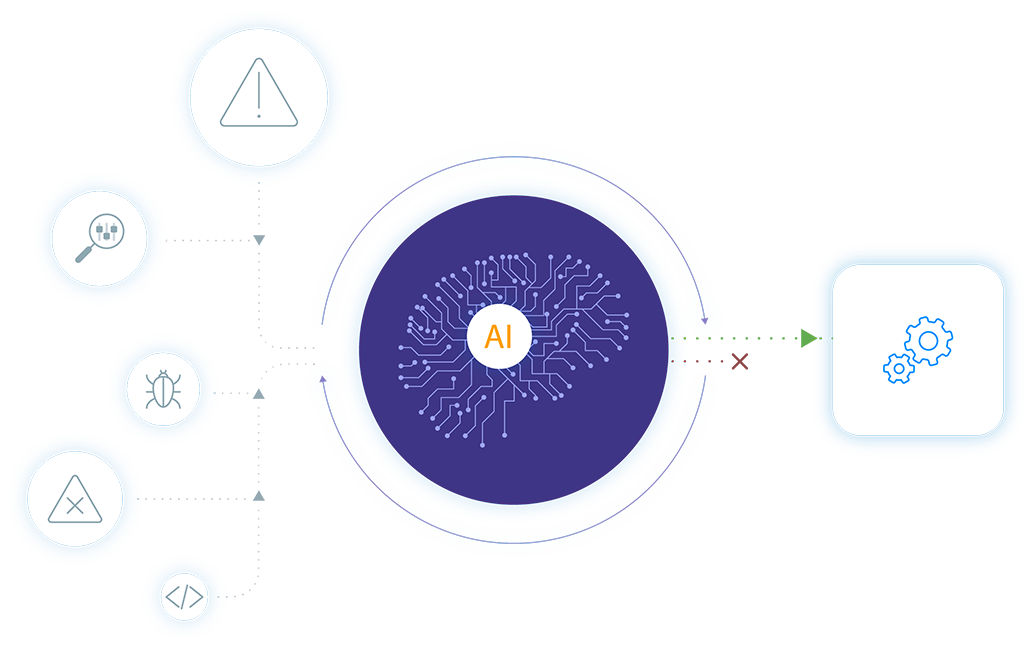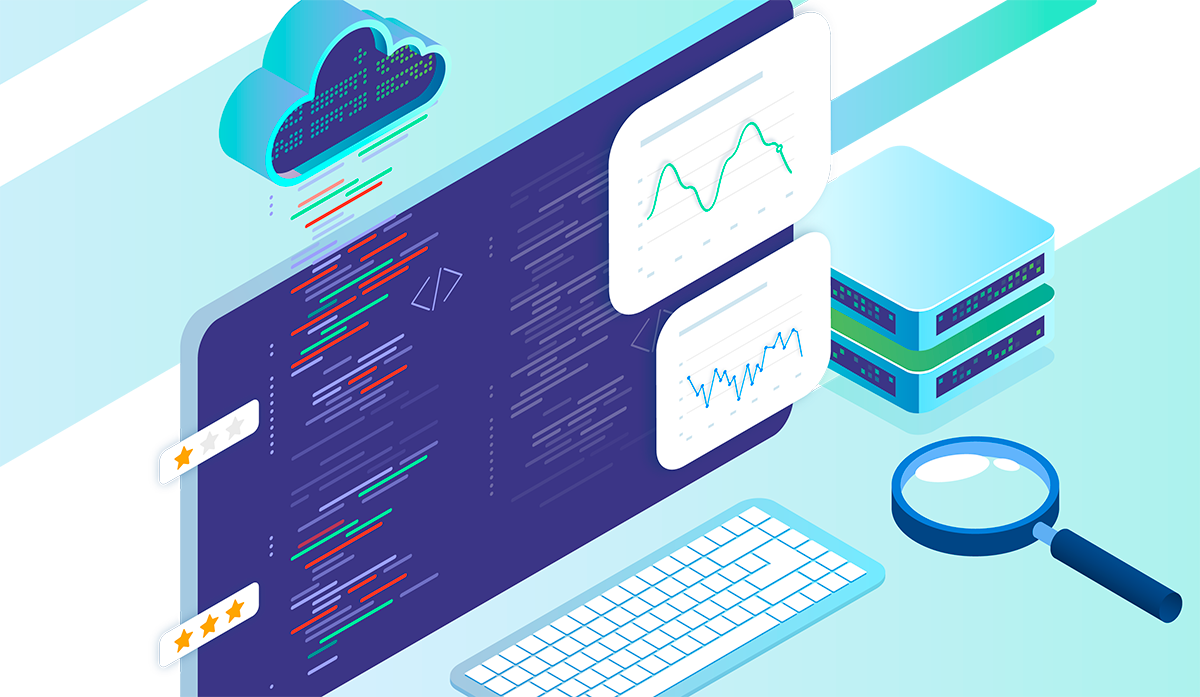Stop Wasting Time on Tests that Aren’t Really Needed—and Get Back to Coding.
Rapid changes in the codebase mean you and your team are writing more and more tests to improve the quality of the application. But how do you know if you’re building tests you actually need—or wasting time building those you don’t? Imagine you could have visibility into high-risk areas of the application, exposing untested code, and even unused legacy code. Such insights could help you spend a much smaller effort cleaning code and building tests, and freeing up more time for new features that create value for users.
In addition, running bloated test suites as part of every build is a huge productivity killer. Waiting for the build requires a context switch and wastes valuable time that could be spent coding. Imagine you could avoid running a full set of unit, functional and regression tests every time you commit new code to the repository, and instead, only run the tests actually needed to test your code changes. This can reduce build times by as much as 90%
Stop Wasting Time on Tests that Aren’t Really Needed—and Get Back to Coding.
Rapid changes in the codebase mean you and your team are writing more and more tests to improve the quality of the application. But how do you know if you’re building tests you actually need—or wasting time building those you don’t? Imagine you could have visibility into high-risk areas of the application, exposing untested code, and even unused legacy code. Such insights could help you spend a much smaller effort cleaning code and building tests, and freeing up more time for new features that create value for users.
In addition, running bloated test suites as part of every build is a huge productivity killer. Waiting for the build requires a context switch and wastes valuable time that could be spent coding. Imagine you could avoid running a full set of unit, functional and regression tests every time you commit new code to the repository, and instead, only run the tests actually needed to test your code changes. This can reduce build times by as much as 90%
SeaLights: Automated Quality Assistance for Software Developers.
In an agile team, everyone is responsible for quality, and everyone suffers when software quality is poor. SeaLights is an automated quality analytics platform that can help developers improve quality fast—and get back to coding.
SeaLights: Automated Quality Assistance for Software Developers.
In an agile team, everyone is responsible for quality, and everyone suffers when software quality is poor. SeaLights is an automated quality analytics platform that can help developers improve quality fast—and get back to coding.
Seeing Quality Risks in Every Pull Request.
When issuing pull requests, developers need a fast, automated way to see if their code introduces a bug. This way, they can perform a quick fix before committing the code—rather than going back and looking for the problem later, which can take hours.
An even bigger benefit is to see data from the production environment—developers need to understand if the code they are touching is actively used in production, and whether it has already caused production issues.
SeaLights Quality Governance ingests millions of data points and analyzes them in real-time using AI/ML algorithms. It analyzes each build and identifies quality risks. Developers can see quality risks within the pull request itself, address them quickly, and proceed to commit their code, saving hours in potential debugging and troubleshooting time.

Seeing Quality Risks in Every Pull Request.

When issuing pull requests, developers need a fast, automated way to see if their code introduces a bug. This way, they can perform a quick fix before committing the code—rather than going back and looking for the problem later, which can take hours.
An even bigger benefit is to see data from the production environment—developers need to understand if the code they are touching is actively used in production, and whether it has already caused production issues.
SeaLights Quality Governance ingests millions of data points and analyzes them in real-time using AI/ML algorithms. It analyzes each build and identifies quality risks. Developers can see quality risks within the pull request itself, address them quickly, and proceed to commit their code, saving hours in potential debugging and troubleshooting time.

Perform Risk-Based Test Execution.
Developers are the first ones hurt by slow builds. Bloated builds hurt productivity and force developers to wait too long before getting feedback on their code. Alternatively, developers may skip tests, which can result in quality issues and technical debt.
SeaLights Enterprise-Wide Quality Control supports developers and helps them move faster without compromising on quality. It enables CI/CD pipelines to run only those tests actually needed to evaluate the latest code changes — reducing build times by up to 90%.
Perform Risk-Based Test Execution.

Developers are the first ones hurt by slow builds. Bloated builds hurt productivity and force developers to wait too long before getting feedback on their code. Alternatively, developers may skip tests, which can result in quality issues and technical debt.
SeaLights Enterprise-Wide Quality Control supports developers and helps them move faster without compromising on quality. It enables CI/CD pipelines to run only those tests actually needed to evaluate the latest code changes — reducing build times by up to 90%.
Identify Test Gaps and Prioritize Testing Activity.
Developers are often tasked with writing tests, but do not know which tests will make the biggest contribution to product quality. Focusing on the tests that really matters can save valuable time.
A clear picture of Test Gaps in the product enables better sprint planning. Instead of stopping development completely and doing a “bug fix sprint” to address quality issues, quality can be addressed in a short period of time, in parallel to regular development work.
SeaLights Quality Governance analyzes test execution data, changes to codebase and production usage, and identifies Test Gaps—critical product functionality that is not sufficiently tested. Developers can focus only on the tests that are needed the most—and get back to coding.

Identify Test Gaps and Prioritize Testing Activity.

Developers are often tasked with writing tests, but do not know which tests will make the biggest contribution to product quality. Focusing on the tests that really matters can save valuable time.
A clear picture of Test Gaps in the product enables better sprint planning. Instead of stopping development completely and doing a “bug fix sprint” to address quality issues, quality can be addressed in a short period of time, in parallel to regular development work.
SeaLights Quality Governance analyzes test execution data, changes to codebase and production usage, and identifies Test Gaps—critical product functionality that is not sufficiently tested. Developers can focus only on the tests that are needed the most—and get back to coding.

360-Degree Test Coverage.
Over the years, developers build thousands of tests across multiple test stages but have limited insights into what those tests are actually covering and if they are still relevant.
To ensure valuable development time is well spent, developers need data about which types of tests are actually missing—unit tests, functional tests, integration tests, or other types of tests that are outside their responsibility.
SeaLights Software Quality Analytics integrates with dozens of testing frameworks and tools and uses AI/ML algorithms to see what is actually tested in the codebase. This allows developers to focus on the tests that matter most.
360-Degree Test Coverage.

Over the years, developers build thousands of tests across multiple test stages but have limited insights into what those tests are actually covering and if they are still relevant.
To ensure valuable development time is well spent, developers need data about which types of tests are actually missing—unit tests, functional tests, integration tests, or other types of tests that are outside their responsibility.
SeaLights Software Quality Analytics integrates with dozens of testing frameworks and tools and uses AI/ML algorithms to see what is actually tested in the codebase. This allows developers to focus on the tests that matter most.
